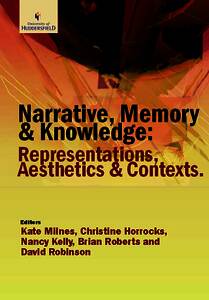The polio epidemics of the 1940s and 1950s created a well-known cultural
story of ‘triumph over adversity’ and lesser known private memories, but both
were forgotten after the vaccine was discovered. Children were encouraged to
get on with it, and not talk about polio or their disabilities. In my research on
the narratives of people who had polio and are now looking back at the
experience because they have new symptoms, childhood memories are being
re-explored. In this paper, I will compare the early memories of two women:
one who was searching for a memory which would explain a feeling she was
left with from her polio experience, and another who told a story of a broken
doll which she came to understand long after our interview. Both women are
trying to express the feeling that they were not understood or listened to as
children. Kirmayer (1996) suggests the term ‘landscapes of memory’ to
describe the different social and personal influences that shape the memories of
different types of trauma such as, in his study, the Holocaust and child abuse.
Polio experiences were influenced by the cultural and rehabilitation ethic of
hard work, silent stoicism, and achievement, but personal memories were often
of children isolated from their families, whose stories no one wanted to hear.
Downloads
Downloads per month over past year
Downloads per month over past year for
"cover05.jpg"
Downloads per month over past year for
"Chapter_11_-_Ruth_Bridgens.pdf"

![cover05.jpg [thumbnail of cover05.jpg]](https://eprints.hud.ac.uk/4909/1.hassmallThumbnailVersion/cover05.jpg)


 CORE (COnnecting REpositories)
CORE (COnnecting REpositories) CORE (COnnecting REpositories)
CORE (COnnecting REpositories)